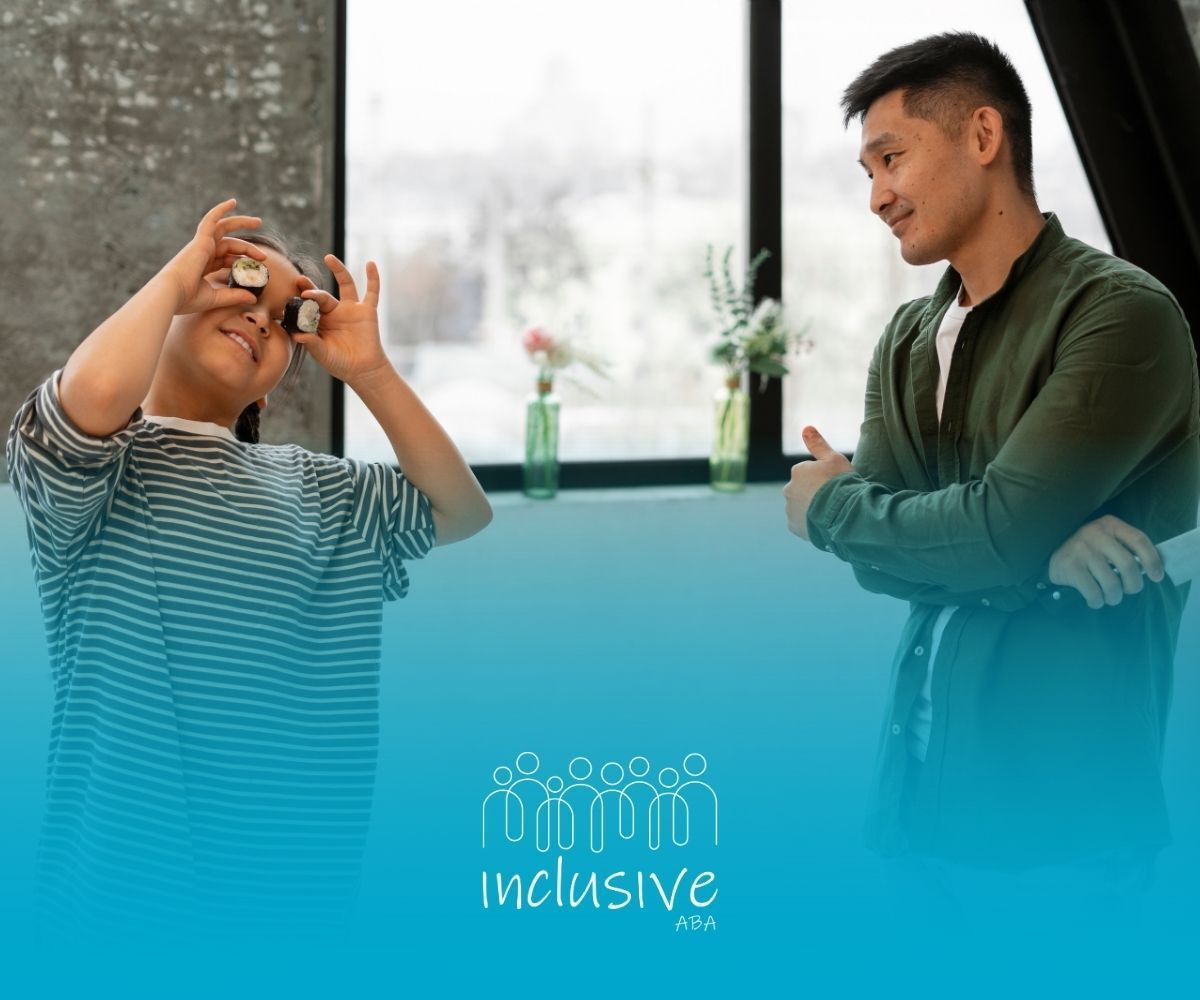Neurodivergent Affirming Practices: A Guide to Autism Inclusion
Colorado families looking into autism services may notice a growing shift toward neurodivergent-affirming models. These practices, rooted in the neurodiversity movement, aim to value autistic identity instead of trying to fix it. In this guide, we explain the principles, challenges, and benefits of this inclusive approach.
Understanding Autism and Neurodivergence
Autism and neurodivergence involve different ways the brain works. This affects how people see and interact with the world. Conditions like ADHD, dyslexia, and dyspraxia are not just weaknesses; they come with unique strengths and challenges. Many of the problems faced by neurodivergent people happen because society is designed for neurotypical individuals.
To support neurodiversity, it’s important to understand autism as part of this movement. We need to change how we see autism. Instead of thinking of it as a disorder, we should recognize its value. This helps include and respect autistic individuals better.
Defining Autism in the Context of Neurodiversity
Autism is a condition that develops in people and falls within the autism spectrum. It shows unique ways of thinking, differences in senses, and varied styles of communication.
The neurodiversity movement looks at autism not as a problem to fix but as a natural way some people's brains work. This way of thinking celebrates autistic identity as something important.
The neurodiversity movement started in the 1990s. Autistic advocates set out to change negative views of autism. Now, it focuses on equality, acceptance, and recognizing autistic individuals as important experts about autism.
By supporting a positive view of autistic identity, society can reduce the negative views about autism. Many autistic adults prefer identity-first language, like calling themselves "autistic persons." This way builds empowerment and changes how society sees autism. It helps people understand autism spectrum conditions in a more accepting way within different communities.
The Spectrum of Neurodivergent Conditions
Neurodivergent conditions include many unique profiles, and they affect people in different ways. Autism and ADHD are among these conditions. ADHD is known for causing hyperactivity, impulsivity, and trouble focusing. It often needs special adjustments or accommodations.
Dyspraxia is another condition in the neurodiversity group. This disorder affects motor skills, making everyday tasks hard for those who have it. This shows how important it is to have inclusive environments. Dyslexia is also part of this group. It shows reading and language difficulties, which highlights the different ways our brains can process information.
The neurodiversity movement recognizes this wide range. It supports understanding and help for everyone with these conditions. The aim is to promote acceptance of neurological differences and meet people’s individual needs.
Principles of Neurodivergent-Affirming Approaches
Neurodivergent-affirming approaches focus on the strengths of autism and other neurodivergent conditions. They look at making accommodations instead of trying to make everyone the same. These practices promote authenticity, empathy, and empowerment for neurodivergent people. They work to support and validate their unique experiences.
These approaches see disability as something related to its environment. They show how society shapes the challenges faced by neurodivergent individuals. The methods aim to improve mental health and quality of life, rather than push for conformity. Shifting to these practices highlights the importance of including the voices and views of the autistic community.
Key Features of Neurodivergent-Affirming Practices
Neurodivergent-affirming practices have important features that help promote inclusion and respect:
- Accommodations: Changes made to fit each person's sensory and social needs.
- Empathy: Focus on understanding neurodivergent experiences rather than judging them.
- Authenticity: Helping people be themselves without hiding who they are.
- Collaboration: Working directly with neurodivergent people in matters that affect them.
These practices change the focus from altering autistic traits to removing the barriers that create extra challenges. By giving people tools, like sensory aids or ways to communicate, neurodivergent-affirming principles create spaces for real growth and development.
Challenges and Criticisms
Neurodivergent-affirming practices have great potential to help, but they face many challenges in being widely accepted. People often mistakenly think that autism means there are only weaknesses, which makes it hard to move forward with inclusion.
There are many problems with putting these practices into action. System barriers and resistance to changing from traditional models focused on deficits create challenges. Critics in the neurodiversity movement point out that we need to do more to support non-speaking autistic individuals and improve how we do research.
These concerns show we need to keep working on comprehensive accommodations and advocacy for all autistic individuals.
Common Misconceptions and Challenges in Implementation
Misunderstanding autism often creates false ideas about neurodivergent people. Social communication problems are usually pointed at autistic individuals. This ignores Milton's "double empathy problem." This problem highlights that miscommunication happens between both sides.
There are also ongoing challenges. Sensory differences, which are important in autism, are often missed in places made for neurotypical people. This lack of support frustrates neurodivergent individuals and pushes them to advocate for change.
To use affirming practices, we need to rethink what society assumes about autism. This is tough in areas that do not accept the needs of neurodivergent people fully.
Addressing Criticisms within the Neurodiversity Movement
The neurodiversity movement faces some criticism. Supporters point out that research and clinical work often overlook non-speaking autistic individuals. Critical autism studies emphasize the need to understand these different viewpoints. They suggest using tools like visual aids or alternative communication methods.
In the future, research should focus on comparing autism across cultures. This will help us gain better insights. It is also important to correct biases in clinical methods that help define autistic identity.
To move the neurodiversity movement forward, we need to improve its methods. This will ensure it connects with the entire autistic community. It should continue to advocate for human rights as well.
Conclusion
In conclusion, it is important to understand autism by using the idea of neurodiversity. This can help us create a more inclusive society. Neurodivergent-affirming practices focus on the unique strengths and challenges of people on the autism spectrum.
They move away from traditional therapies that only look at weaknesses. By adopting neurodiversity principles, we can challenge wrong ideas and build places that support the well-being of neurodivergent individuals. As we learn more and share this information, we can promote a kinder and better understanding of autism and neurodiversity.
At Inclusive ABA, we believe in honoring the identity and voice of every neurodivergent individual. Our ABA therapy services in are tailored to meet each client where they are, using strategies rooted in empathy, empowerment, and autonomy.
If you're looking for support that celebrates your child's unique strengths, Inclusive ABA is here to help—because real progress begins with real acceptance.
Frequently Asked Questions
What are the core principles of neurodivergent-affirming practices?
Neurodivergent-affirming principles are about understanding and supporting each person's unique needs. This includes showing empathy and promoting authenticity. These ideas do not force autistic individuals to fit a typical mold. Instead, they focus on self-advocacy, compassion, and specialized support. This approach helps to affirm the identities and challenges of autistic individuals.
What does it mean for autism to be considered a neurodivergent condition?
Autism is a different way the brain can work. It shows that people with autism spectrum disorder have unique neurological differences. Instead of seeing autistic ways of being as flawed, we should recognize them as special. This helps highlight the important role they play in human diversity. It’s essential to create environments where everyone feels included and valued.
What are some common misconceptions about neurodiverse individuals with autism?
Many people wrongly believe that autistic individuals do not have social skills. They think that their way of interacting means they are impaired. We should not judge someone's worth based on neurotypical social skills. A real understanding shows that there are different communication styles. This understanding helps us remove bias.
Sources:
- https://www.autism.org.uk/advice-and-guidance/topics/identity/the-neurodiversity-movement
- https://childmind.org/article/what-is-neurodiversity/
- https://www.health.harvard.edu/blog/what-is-neurodiversity-202111232645
- https://pmc.ncbi.nlm.nih.gov/articles/PMC10430771/
- https://childrens.wvumedicine.org/blog/autism-spectrum-disorder-how-about-neurodiversity-affirming-instead-of-disorder
Looking for Expert Help? We're Here for You!
Our compassionate and skilled team is devoted to enhancing your child's development through customized ABA therapy. Let us partner with you to create a supportive environment for your child's success.
Discover how we can help your family thrive with expert ABA therapy.
Related Posts







